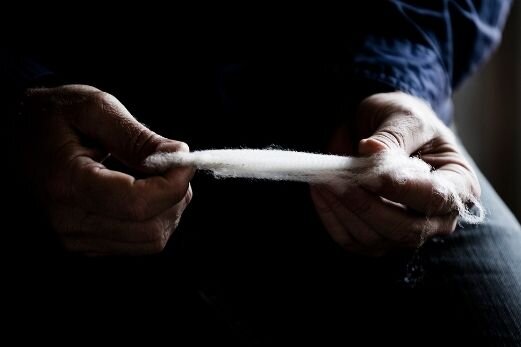What are the environmental benefits of wool?
Photo: The Woolmark Company, www.woolmark.com
With consumers becoming more and more environmentally conscious, there has been a notable increase in environmental creds being a key factor in their buying decision-making process. Consumers these days are looking for more environmentally friendly, renewable, and sustainable products. For some brands and manufacturers that is more easily said than done with man-made fibres and substrates which can have a negative impact on the environment a normal, everyday component of many apparel products.
However, one of the great advantages we have at Robert Mackie is that we do not use synthetic yarns in any of our products. We only work in natural yarns, with the majority of our accessories made from a high quality lambswool, a soft wool from merino sheep. It is because of this that we produce renewable products.
But how is wool renewable?
For something to be considered renewable, it needs to be natural. A natural fibre is one that is produced by a plant or an animal that can be spun into a thread or a filament. A natural fibre has a purpose in its original environment, is produced by a living organism and grows without human intervention.
Photo: The Woolmark Company, www.woolmark.com
All natural fibres such as wool are therefore considered renewable. This means that they regrow and replace themselves over time naturally. The oldest known animal fibre is wool, but other natural fibres include cotton and silk.
In the case of lambswool and other merino yarns, making wool simply requires water, air, sunshine, grass and of course a healthy sheep to benefit from these natural ingredients. Sheep are sheared approximately once a year, yet their fleece continues to grow even after being shorn, just like human hair grows after a haircut or a shave.
Wool is considered the most reusable & recyclable apparel fibre on the planet. Not only that, but it is 100% biodegradable. So, when a wool product is past its best (which should take quite a long time as a result of its durability) it can naturally degrade rapidly in warm, moist conditions, releasing nutrients back into the earth to support the carbon & nutrient cycle, and in turn reduce the environmental impact of the textile industry.


